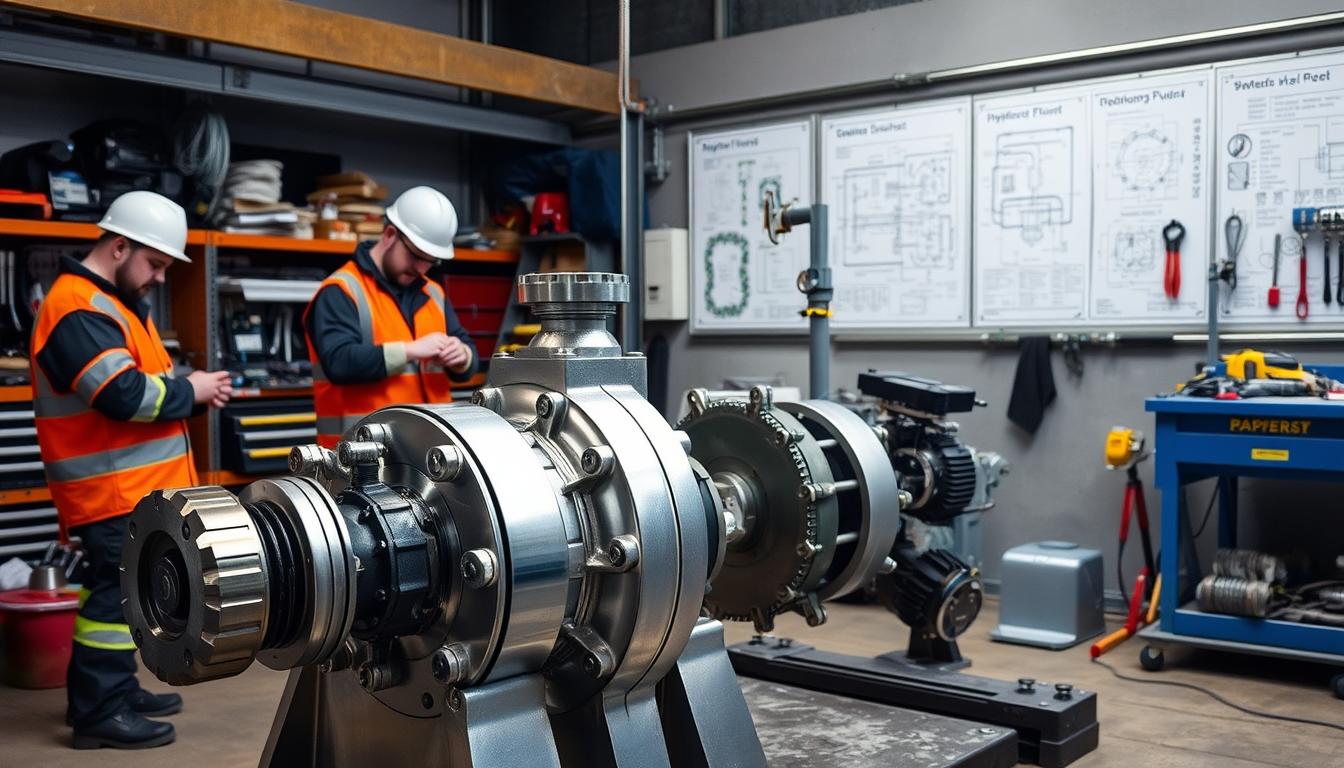Pump installation and commissioning are key steps for effective pump operation. They are important in many applications. The secret to a good pump setup is following engineering standards and manufacturer specs during installation.
This means being precise with alignment and mounting. It helps pumps last longer and work better.
By focusing on detailed pump services, I can make installations fit specific needs. This approach improves function and reliability in systems that depend on pumps. Let’s explore why these early steps are so vital for a successful pumping system.
Understanding the Importance of Pump Installation:
The role of pump installation is huge. It affects how well a pump works and how long it lasts. A well-installed pump moves fluid smoothly, making the system work better. But, a bad installation can cause big problems like cavitation and seal failures.
These issues hurt the pump’s reliability, leading to expensive fixes and downtime. It’s clear that a good installation is key to avoiding these problems.
Quality installation is more than just setting up a pump. It helps save money on repairs and makes the equipment last longer. Studies show that pumps installed by pros have fewer breakdowns and cost less to fix over time. Choosing quality installation means your system will run smoothly and efficiently for years.
Types of Pumps and Their Applications:
Exploring pump applications, I see that knowing the difference between centrifugal and positive displacement pumps is key. Centrifugal pumps turn rotational energy into kinetic energy. They’re great for water treatment and HVAC systems because they move fluids well at high rates.
Positive displacement pumps, on the other hand, are best for thick fluids. They’re used in chemical and food processing. These pumps ensure a precise amount of fluid moves with each cycle. Submersible pumps are used for groundwater, and industrial pumps for chemical processes.
Understanding each pump’s role helps design better systems. Choosing the right pump improves efficiency, cuts costs, and boosts reliability in many areas.
Pump Installation: Best Practices:
In my years of experience, I’ve learned key pump installation best practices. These ensure the pump works well for a long time. Before starting, it’s important to check the site and foundation carefully.
Getting the pump aligned and level is key for its performance. If it’s not, it can wear out faster. Using precise methods ensures the pump works smoothly.
Adding valves and filters is also important. They help the pump system work better and last longer. Following standards like ASTM and ISO is vital for reliable installations.
After installing, it’s important to test the pressure. This finds any leaks that could harm the system. By following these practices, you get a pump setup that’s strong and efficient.
Pump Commissioning Process:
The pump commissioning process is key after installation. It makes sure the system works right. I start by knowing the steps, which include checks, tests, and tweaks. First, I test the pump’s power to see if it turns on.
Then, I watch how well it performs. This checks if it’s working efficiently.
Next, I look for any problems. A commissioning engineer’s skills are really helpful here. Finding issues early helps the pump work best under normal loads. I keep track of everything, so I can use it later for upkeep or fixing.
Doing a full test confirms the system’s reliability. By following a careful process, I make sure the pump works as planned. It will keep working well for many years.
Maintaining Your Pump After Installation:
Keeping your pump in top shape is key to its performance and life span. After it’s installed, I set up a strict maintenance plan. This includes regular checks and service tasks.
These frequent inspections help spot problems before they get worse. I look closely at vibrations, leaks, and odd sounds in all parts.
Tasks like lubrication and seal changes are also important. I follow the maker’s maintenance advice, which is specific to each pump. Keeping maintenance records helps track how well the pump is doing over time.
This way, I can catch issues early and keep the pump running smoothly for many years.
Why Choose Professional Pump Services:
Choosing professional pump services can greatly improve your system’s performance and reliability. While DIY might seem cheaper at first, the benefits of expert installation are much greater. Trained professionals know how to set up pumps for the best results, based on your specific needs.
Professional services offer more than just quality work. They bring a wealth of industry knowledge to the table. This helps avoid costly mistakes that can happen with DIY. They also use the latest technology to make sure your pumps work well for a long time.
In the long run, going with professional pump services can save you money. They help keep your system running smoothly, reducing downtime and maintenance costs. Plus, you’ll have peace of mind knowing your pump is in good hands. This lets you focus on your business’s main goals.
